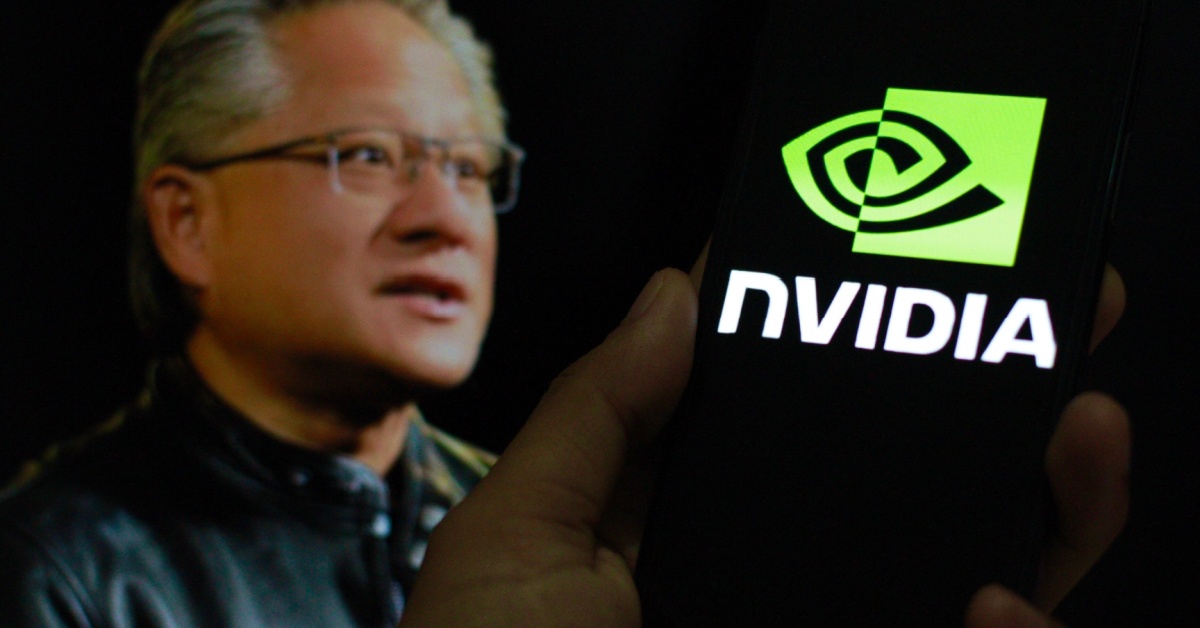Nvidia Corp. (NASDAQ: NVDA) CEO Jensen Huang gave the keynote at the Consumer Electronics Show (CES) in Las Vegas on January 6, 2025. Here are the key highlights and numbers that we’re watching.
CES Highlights: Introduction
Jensen Huang, CEO of Nvidia, delivered the Consumer Electronics Show (CES) keynote on Monday evening, January 6, 2025. The comprehensive presentation incorporated near-term and long-term trends for AI infrastructure and applications, including an emphasis on robots and self-driving cars.
He spent time on Blackwell and highlighted how it is now in production. The Blackwell business model remains the key debate around Nvidia’s valuation and may make the stock volatile this year.
Nvidia CEO Jensen Huang Confirms Blackwell in Full Production
AI agents and AI laptops are two near-term AI trends that may be worth monitoring closely. AI agents keep coming up and this year, these may start to take form and show up in workflows. Huang illustrated how different personas can be brought to life with agents. While the verdict is still out on agents, it will be interesting to see how they evolve and whether or not they may serve as a catalyst for broader adoption.
CEO Huang Showcasing Agentic AI
He illustrated the company’s long-term aspirations of seeing a world with more robots and self-driving cars. (See our report on Bringing AI to Heavy Industry – Visible Alpha) However, questions remain about what new tools, functions, and applications will get users excited and drive broader adoption. In addition, investors are wondering how soon we may see more robots in both manufacturing and everyday life and what the cost may be.
Huang’s focus seemed to be more on hardware and how Nvidia’s chips will enhance workflows and improve productivity. While Nvidia has been the undisputed winner in transitioning the data centers for generative AI and increasing compute power, new investment stories may begin to emerge in 2025. It may be time to look beyond Nvidia for underappreciated beneficiaries of the AI theme trading at cheaper valuations.
CES Highlights: Blackwell and the Nvidia Valuation Debate
Of particular importance for Q4, he highlighted that Blackwell is in production. The ramp from Q4 to Q1 of this new product will likely be an important driver of the stock in the first half of 2025. In addition, the pricing, profitability, and pace of supply will be critical to quantifying the timing and magnitude of Nvidia’s earnings growth in FY 2026.
Since late November, the Data Center segment’s expected revenues in Q4 edged up slightly higher from $33.6 billion to $34.0 billion, according to consensus. While the pace of analysts’ upward revisions to the Data Center segment has moderated, it will be important to see how Nvidia guides the market for Q4 and the rest of FY 2025, and to what extent higher pricing and volumes will be expected to continue.
Currently, there is significant debate about the performance of the Data Center segment. Based on Visible Alpha consensus, this business is projected to generate $34.0 billion in revenues in Q4 2025, with estimates ranging from $31.8 billion to $38.0 billion. In particular, the company’s commentary and outlook for Blackwell will likely be important in the Q4 earnings call. The B-series revenue is expected to jump from $3-4 billion this year to $74.9 billion next year, revised up nearly $20 billion since last quarter.
Looking ahead, consensus expects FY 2026 Data Center revenue of $183.9 billion, up from the $170.8 billion estimated in November 2024. The estimates for this line item have continued to widen and now range from $152.4 billion to $252.8 billion, driven by significant market debate around Blackwell’s impact on revenue and gross margin.
It is worth noting that the consensus gross profit margin for the Data Center segment for FY 2026 has decreased by 250bps to 75.4%, reflecting lower expectations for FY 2026. In addition, the consensus is projecting the operating profit margin to come down from this year’s projected annual peak of 66.6%. These dynamics in consensus estimates are causing the expected FY 2026 consensus P/E to be 33x and to range from 24x to 37x.
Nvidia’s Key Financial Items

Source: Visible Alpha consensus (January 7, 2025). Stock price data courtesy of S&P. Nvidia’s current stock price is as of the market close on January 6, 2025.
CES Highlights: Will AI laptops Help Drive an Upgrade Cycle?
Another important looming question in the market is around the laptop upgrade cycle. At the moment, enterprises and consumers have not demonstrated excitement around upgrading their laptops. Huang explained that AI laptops will be equipping various levels of RTX at reasonable price points, available from this March.
CEO Huang Highlighting AI Laptops
By enhancing the power and capabilities of the laptop, this hardware upgrade should support more efficient coding by automating the standardized areas of the development process. In addition, it should also enable engineers to focus more on the creative workflows in the development process. This may be where the AI ‘agents’ start to appear.
One of the biggest challenges of AI applications and agents is the requirement to be extremely domain-specific. Embedding these in the backend workflows of engineering and data operations may be a natural place for them to be trained effectively and demonstrate value. However, at the moment, requiring domain experts at the top of the stack to train agent personas has been challenging and expensive. If the value-add of these next-generation laptops is able to show a meaningful impact to speed and move the needle on innovation, then there could be an uptick in demand, which could jumpstart a replacement cycle.
Based on a survey conducted by 451 Research (part of S&P Global Market Intelligence), AI is set to become more important to enterprises in 2025. As companies think about the best way to bring AI into their organizations, their existing hardware may require an upgrade. According to 451 Research, Dell, HP, and Lenovo were the top three laptops that organizations plan to buy. All three recently released new AI laptops. Could these new models drive growth that exceeds current expectations over the next few years?
Based on Visible Alpha consensus, these three laptop manufacturers are estimated to see unit sales 15-25% below the previous demand surge from COVID, while prices are expected to increase. In addition, valuations are at a discount compared to other AI plays in the sector.
Looking back to FY 2021-2022 when units peaked, AI may help drive upside to current unit expectations at higher price points over the next few years.
Notebook Data for Dell, Lenovo, and HP

Source: Visible Alpha consensus (January 7, 2025). Stock price data courtesy of S&P. Nvidia’s current stock price is as of the market close on January 6, 2025.
AI and the Laptop Purchasing Survey








